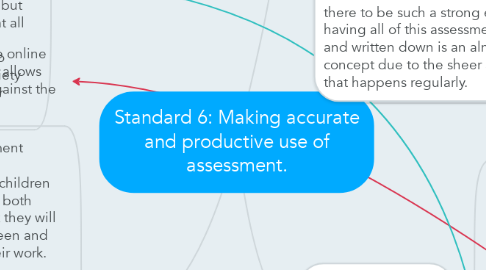Standard 6: Making accurate and productive use of assessment.
by Jake Hawkings

1. The Owls (Years 4/5)
1.1. As a number of children in the Owls' class have various SEND, the members of staff make use of Raise Plans that set targets for the children that are relevant to their additional needs that they have. This therefore allows for an opportunity to observe the progress of the children on an academic level as well as on a level that takes their additional needs into account.
1.2. The Owls' class itself consists of higher ability Year 4s and middle to lower ability Year 5s. Due to the nature of this, it ends up being that the higher ability children of the class predominantly come from Year 4, and the children who often require more additional support or differentiation are in Year 5. To account for this, the teaching often starts with the Year 4 objective, and builds it up over a period of time to being the same objective but in its Year 5 form. This therefore ensures that all children in the class are granted the same opportunities and are not limited, but it also encourages all children to take part in a variety of objectives that may or may not be in their strongest areas.
2. The school
2.1. The school as a whole makes use of the online application "School Pupil Tracker" that allows each individual child to be assessed against the current National Curriculum.
2.2. The school also has a marking/assessment policy that all class teachers and other members of staff follow. Therefore, as children move through the school, the children both receive and are aware of the feedback they will gain. The children are aware of the green and pink marking policy that is used on their work.
2.3. Goodrich Primary School also incorporates a "Next step" feature when marking through work. For children who have completed/done well in their written work, they will receive a next step that allows them to further extend their knowledge, or apply it in a more challenging manner.
2.4. The school is currently rated by Ofsted as being "Good" and thus have this to uphold. In order to ensure this is done, the members of staff working at Goodrich continually refer to their most recent Ofsted report in order to keep track of where their strengths and areas of development are.
3. Key Stage level
3.1. Currently, there seems to be an issue with the reading level of children in Key Stage 1. In order to combat this, more of a focus is put on reading throughout a variety of lessons, as a large proportion of the children are still working below their expected level.
3.2. Also, within Key Stage 1, there is an issue with the collection and submission of data across a range of curriculum subjects. In order to allow for this to be fixed and edited to give an accurate representation of the children, the school had a week almost entirely devoted to data collection that allowed all classes to collect any data they may require that needs to be submitted to Tracker
3.3. Key Stage 2, however, have the disadvantage of having quite a poor performing Year 5 cohort. In order to account for this and improve it as much as possible, the Year 5 cohort is split between two classes that are able to cater to their needs as best as possible. The lower ability Year 5s are in the Owls' class with the higher ability Year 4s, whilst the higher ability Year 5s are with the rest of the Year 6 cohort in the Peregrines' class.
4. Currently, I believe schools are struggling to some extent with the copious amounts of paperwork that goes with the assessment process. A large amount of assessment happens by a teacher without them even realising, and teachers assess on a daily basis. For there to be such a strong emphasis on having all of this assessment formalised and written down is an almost alien concept due to the sheer amount of it that happens regularly.


